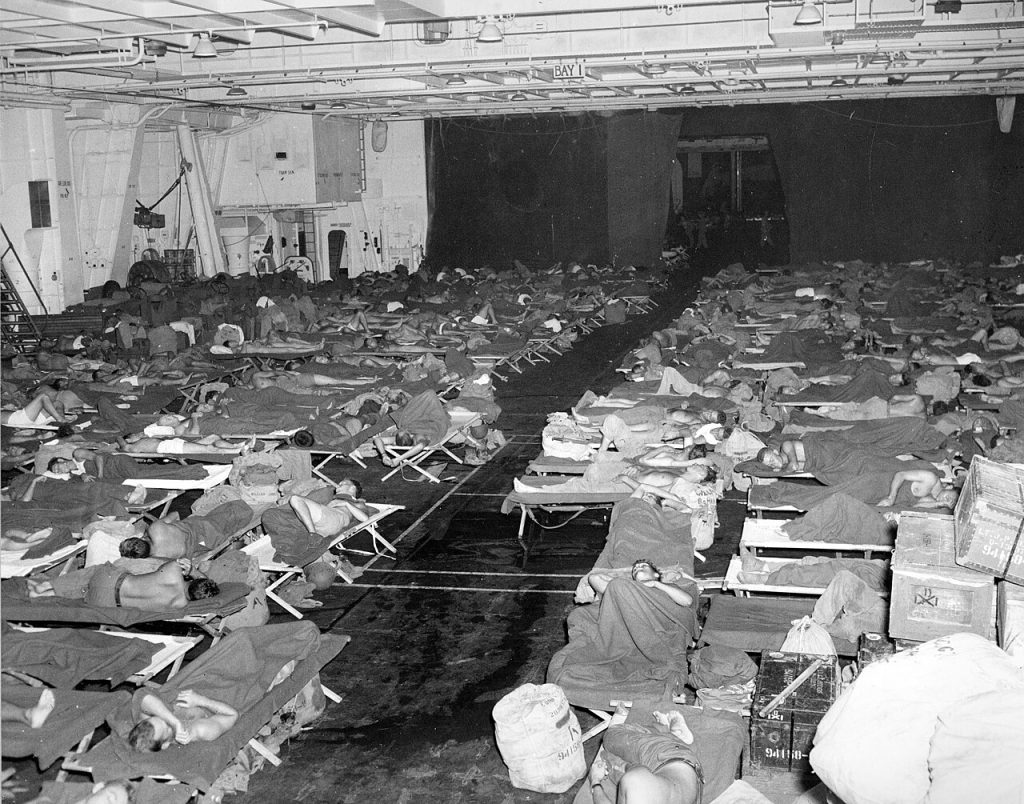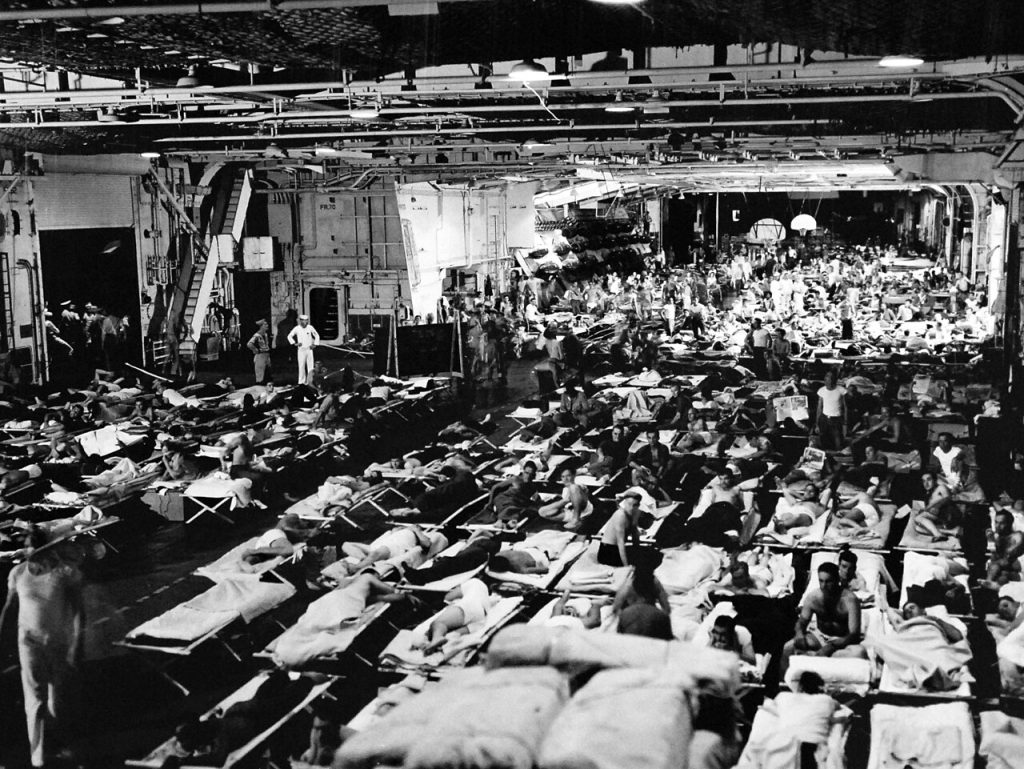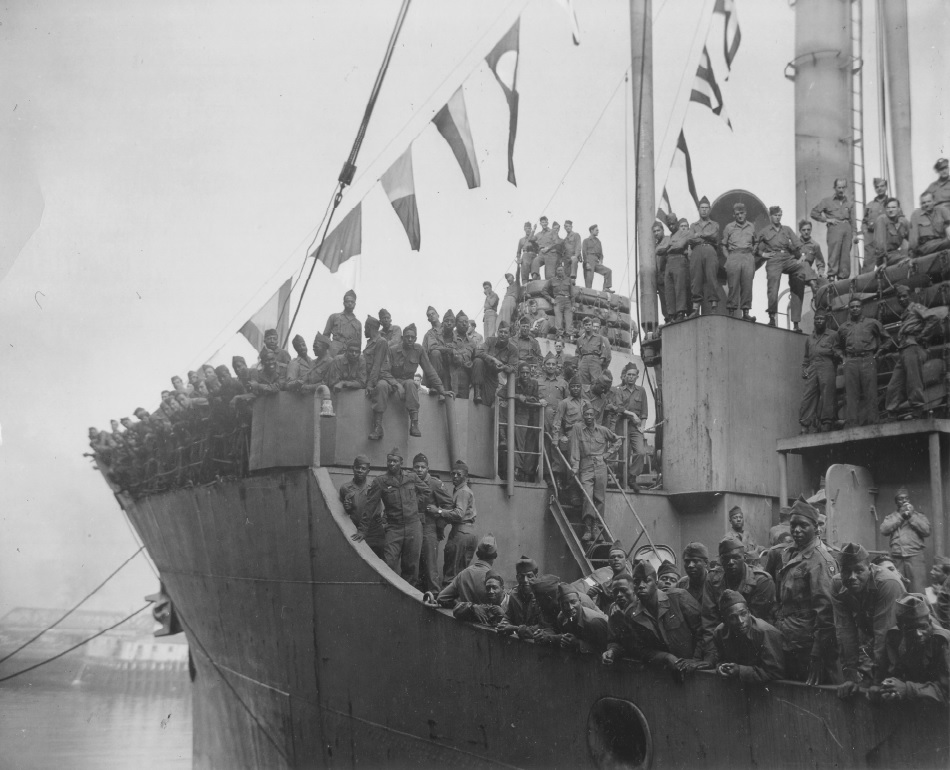Operation Magic Carpet, undertaken by the United States in 1945, remains one of the most monumental and efficient troop repatriation efforts in military history.

Following the end of World War II, the U.S. faced the colossal task of returning over eight million American soldiers from the European and Pacific theaters back to the United States.
Background
During World War II, the United States had mobilized an unprecedented military force, deploying over 16 million men and women in various capacities.
This global deployment presented a unique challenge in the war’s aftermath, as soldiers were scattered across continents, often in remote or war-torn areas.
The end of the war brought a sense of relief but also uncertainty. The U.S. government and military were under immense pressure to demobilize troops swiftly and efficiently.
 Servicemen and women on their way back home in the hangar bay of USS Intrepid.
Servicemen and women on their way back home in the hangar bay of USS Intrepid.
Soldiers, eager to return home, were growing restless in foreign lands, leading to concerns about morale and discipline.
The societal pressure was immense, with families and communities across America anxiously awaiting the return of their loved ones.
The logistical challenges of returning millions of troops were compounded by the devastated infrastructure in many parts of Europe and the Pacific.
Many ports, railways, and roads had been damaged or destroyed during the war, complicating the task of mass troop movement.
Execution Of Operation Magic Carpet
The operation officially began in late 1945, shortly after the end of World War II. The initial phase was focused on developing a streamlined process for the massive movement of troops.
The operation faced immediate challenges, including limited transport capacity, the need for extensive refurbishment of ships, and the coordination of departures from various global locations.
A significant number of naval vessels, including aircraft carriers, battleships, and other ships, were converted for troop transport.
This process involved reconfiguring the vessels to accommodate as many soldiers as possible while ensuring their safety and basic comfort.

The operation maintained a continuous flow of troop transport, with ships constantly moving between overseas locations and U.S. ports.
Many ships carried more troops than they were designed to hold, leading to overcrowded conditions. Despite these circumstances, efforts were made to maintain decent living conditions.
The troops were welcomed at various U.S. ports, where they began the process of demobilization.
This process was itself a logistical challenge, involving the distribution of pay, discharge papers, and transportation to their home towns.
Conclusion Of The Operation
For many troops, the journey home was not just a physical but a psychological transition from the life of a soldier to a civilian, a process that began on these voyages.
 The Victory Ship ‘Aiken Victory’ arriving in Boston Harbor. She was carrying 1,958 troops, 26 July 1945.
The Victory Ship ‘Aiken Victory’ arriving in Boston Harbor. She was carrying 1,958 troops, 26 July 1945.
Operation Magic Carpet was largely completed by the end of 1946, having successfully repatriated the majority of U.S. troops. The operation was considered a monumental success in military logistics.
The execution of Operation Magic Carpet was a landmark achievement, showcasing the ability of the U.S. military to mobilize, execute, and manage a massive and complex logistical operation with efficiency and care for the welfare of its servicemen and women.





